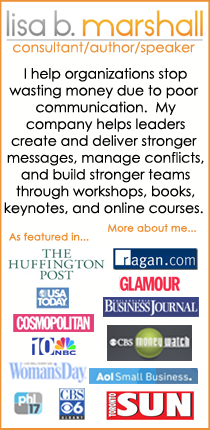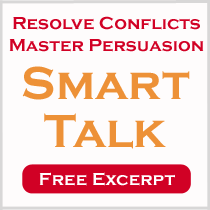Errors with eye contact
Many studies indicate that making eye contact is the most powerful mode of establishing a communicative link between humans. It has been shown to be vital to human social development, important to information recall, and important for persuasion. Your goal should be to have direct eye contact with someone in your audience at much as possible. I usually tell clients, 90% of the time you should be gazing directly into the eyes of an audience member. Yep, that much!
The specific problem that I see the most is that people tend to rely on their slides as their notes so they turn to face the screen and end up talking to the screen–not to audience members. The best thing to do is to practice so that you don’t need to rely on the slides. If necessary, you can print out your some brief notes that you can keep in front of you. In any case, if you feel the need to sneak a peek. Keep this advice in mind…”look, lock, and talk”. That is, “look” quickly at the notes/screen to remind yourself where you are heading, then “lock” in on someone’s eyes in the audience and “talk” to them directly.
I have noticed with overachievers (most of my clients) they often know the material very well, yet still feels the need to look at the slides just to be “sure they don’t leave anything important out.” However, in this case, the “looking” is just an unnecessary distracting habit and it significantly detracts from the presentation. It is always better to connect with your audience talking (eye to eye) in a comfortable conversational manner…even if you do accidentally leave something out.
Don’t worry, really. An interested person can read the missing detail in your paper or simply ask you during the Q&A. Again, making the connection with your audience is MOST important and eye contact is essential to achieving that.
Finally, since many of my clients are foreign nationals, sometimes this problem with eye contact simply stems from cultural differences in the social meaning of eye contact. In Native American, many Asian, and some Hispanic cultures, looking down and avoiding direct eye contact is a sign of respect. However, most scientific conferences are held in English and follow North American communication standards. In this style of communication, trust is developed through eye contact and it is eye contact that allows you to make a connection with your audience.











There are 2 comments .